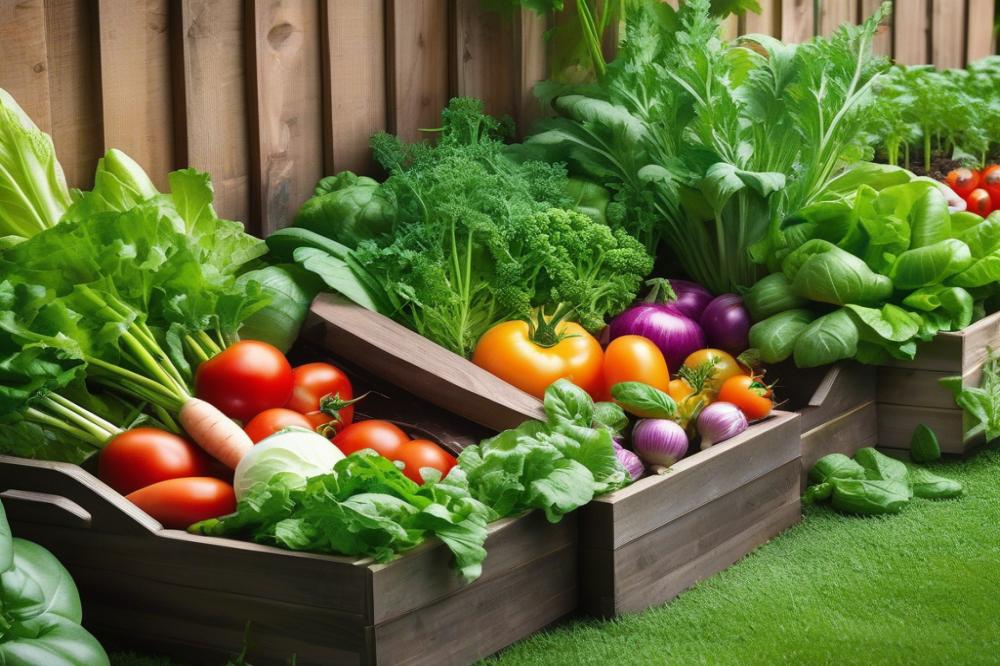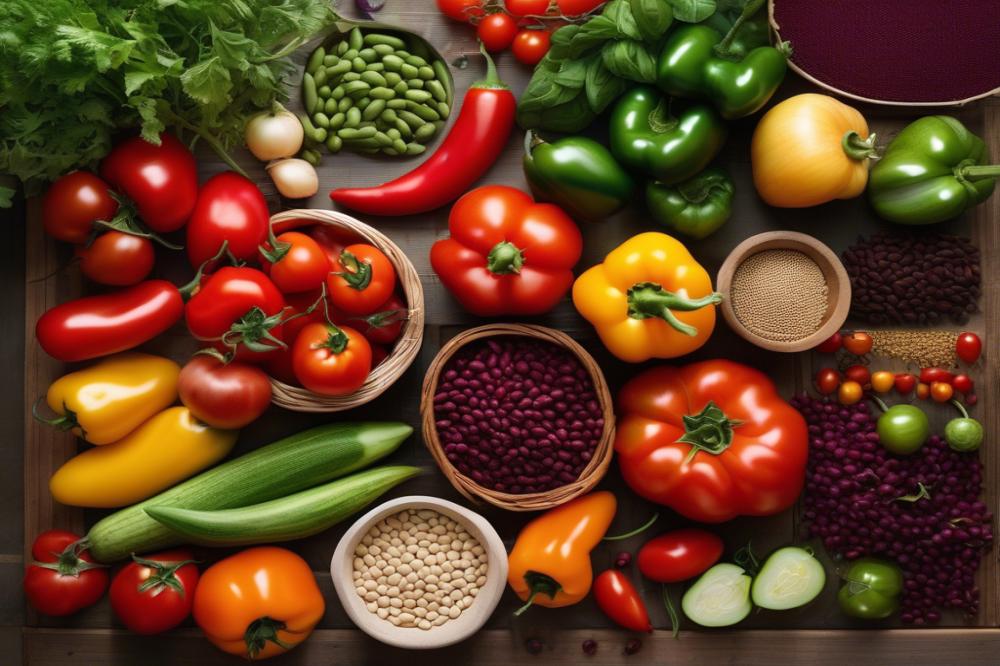Harvesting and Storing Fresh Tomatoes
Homegrown tomatoes hold a special place in many gardens. They boast superior flavor and freshness that often surpasses store-bought options. Growing your own tomatoes can be a rewarding experience, filling your meals with vibrant colors and rich tastes. Understanding how to properly manage your crop is crucial for enjoying these delicious fruits at their peak.
This article will explore the best practices for tomato harvesting and storage. Knowledge about picking ripe fruits at the right moment helps maximize flavor and texture. Tips and techniques for preserving tomatoes will also be discussed. After all, knowing how to store tomatoes appropriately ensures that you can enjoy your harvest long after the last vine has been picked.
Ripening tomatoes can be a bit tricky, but there’s satisfaction in getting it right. Various tomato varieties can behave differently, requiring diverse approaches to care. With the proper gardening techniques and seasonal vegetable awareness, you can cultivate a fruitful harvest. By implementing effective strategies, you’ll find it easier to enjoy your fresh tomatoes throughout the year.
Embracing organic gardening can add another layer to your tomato-growing journey. By focusing on natural methods, you can enhance the quality of your fruits and contribute positively to the environment. Whether you are a seasoned gardener or new to this practice, learning how to efficiently harvest fresh tomatoes and implement storage methods will elevate your gardening skills.
How to harvest fresh tomatoes


Identifying the Right Time to Harvest
Knowing the right moment to pick tomatoes is crucial for the best flavor. Look for a vibrant color, which varies depending on the variety. Most tomatoes are ready when they are a rich red, but some types can be yellow, orange, or even purple at maturity. A slight give when gently squeezed indicates ripeness. Also, observing the stem can help; when it begins to brown, it’s a sign that the tomatoes are likely ready for picking.
Techniques for Picking Ripe Tomatoes
When it’s time to collect the fruit, be gentle. Use your fingers to pinch the stem just above the tomato. Pulling too hard can damage both the fruit and the plant. Alternatively, scissors can be used for a clean cut. Make sure to avoid twisting or yanking the fruit from the vine. This method helps preserve the juice and keeps the tomato intact for better flavors.
Understanding Tomato Varieties and Their Ripening Times
Various tomato varieties mature at different speeds. For instance, cherry tomatoes often thrive earlier than beefsteak types. Familiarize yourself with the specific plants in your garden. Usually, the seed packet or nursery label contains information about the expected harvest time. This knowledge aids in the planning process for both tomato harvesting and eventual tomato storage.
Best Practices for Handling Tomatoes During Harvest
Handling tomatoes with care is essential to maintaining their quality. Avoid stacking them on top of each other right after picking. That could lead to bruising and spoilage. Instead, place the ripe ones gently in a basket or a flat box. Moreover, if possible, harvest early in the morning. Cooler temperatures help reduce the risk of damage. Always wash your hands before picking; this practice keeps the tomatoes healthier and reduces the risk of diseases. Following these garden tips will result in a more enjoyable harvesting experience.
Tomato Ripening Techniques


Benefits of Allowing Tomatoes to Ripen on the Vine
Ripening tomatoes on the vine offers numerous advantages. The flavor greatly improves when fruits fully mature on the plant. Sunlight contributes to the development of sugar, acid, and other compounds that create a rich taste. Nutrients from the soil continue to nourish the tomatoes, enhancing their quality. Additionally, vine-ripened tomatoes often have a firmer texture, making them more enjoyable. For those interested in organic gardening, this method supports a more natural growth process.
Methods for Ripening Green Tomatoes Indoors
Green tomatoes can still ripen indoors if necessary. One popular method involves placing them in a paper bag. This technique traps ethylene gas, which speeds up ripening. Alternatively, you can arrange them in a single layer on a countertop away from direct sunlight. Keeping them warm, around 70 degrees Fahrenheit, creates a suitable environment. Another option is to wrap them individually in newspaper. This also helps hold in moisture while promoting uniform ripening.
Factors Influencing the Ripening Process
Several factors affect how quickly and effectively tomatoes ripen. Temperature plays a significant role; warmer conditions favor faster ripening. Light exposure cannot be underestimated either. While too much can harm the fruit, moderate light can help with color development. Humidity is another element; if it’s too low, tomatoes may shrivel instead of ripening. Select tomato varieties also impact this process. Some types, such as heirlooms, may take longer than others.
Garden Tips for Promoting Healthy Ripening
To encourage healthy ripening in your garden, start with proper spacing between plants. This allows for better airflow, reducing the risk of disease. Regular watering is crucial, but avoid letting the soil become waterlogged. Applying organic mulch can help maintain moisture and regulate temperature around the roots. Additionally, pruning unnecessary leaves allows sunlight to reach the fruits more effectively. Monitoring for pests and diseases will also contribute to a better harvest. Following these gardening techniques helps ensure vibrant and flavorful seasonal vegetables.
Tomato Storage Best Practices


Ideal Conditions for Short-Term Storage
Fresh tomatoes thrive in a cool, dry place. Store them in a single layer, as stacking can cause bruising. A countertop or a pantry works well for keeping them at room temperature. Keep tomatoes out of direct sunlight to prevent uneven ripening. The best temperature for short-term storage is between 55°F and 70°F. This range helps maintain their flavor and texture, allowing you to enjoy peak freshness.
Tips for Long-Term Storage of Tomatoes
For longer periods, consider canning or freezing. Canning preserves tomatoes for months, so you can enjoy them in winter. Freezing is simple; just wash, chop, and place them in airtight bags. This method is fantastic for maintaining garden tips throughout the season. If you’re planning to can, use high-acid varieties for the best results. Take care to follow safe canning techniques to avoid issues.
Storing Different Tomato Varieties
Each tomato variety has its own best storage method. For instance, cherry tomatoes can stay on the countertop, benefiting from room temperature. Larger varieties, like beefsteak, should also be kept out of the fridge. However, if they are very ripe and you can’t use them quickly, refrigeration can slow decay. Understanding which tomatoes to store where is key to using your seasonal vegetables effectively.
Importance of Refrigeration and Its Effects on Taste
Refrigerating tomatoes can negatively impact their flavor. When cold, the natural sugars and acids that give tomatoes their taste are muted. The texture may become mealy as well. For those with a bounty from tomato harvesting, it’s vital to know that while refrigeration extends shelf life, it sacrifices quality. Ideally, keep them in a cool place and only refrigerate as a last resort. Preserving tomatoes at their peak results in a more vibrant taste.
Preserving Fresh Tomatoes
Harvesting fresh tomatoes can lead to a delightful abundance. To make the most out of your crop, preserving them is essential. Various methods exist for this task, including canning, freezing, and drying. Each technique has its advantages and can help maintain the delicious flavor of your tomatoes.
Common Methods for Preserving Tomatoes
Canning is a popular way to store tomatoes long-term. This process involves placing the fruit in jars and heating them to kill bacteria. Use pressure canners for safety, especially with low-acid varieties. Freezing offers an easy alternative. Just wash, chop, and place tomatoes in airtight containers. Ensure they are labeled and dated before freezing. Drying tomatoes is another method. This involves removing moisture to prevent spoilage. You can use a dehydrator or even an oven for this process. Each method suits different types of tomato varieties, so choose according to your needs.
Best Practices for Preserving Flavor and Nutrients
Maintaining the taste and nutrients of tomatoes is crucial. Select ripe tomatoes for the best results. These fruits are more flavorful and will provide better texture. When canning or freezing, process them promptly after harvest. This helps maximize their freshness. Organic gardening approaches emphasize minimizing chemical additives, which can impact flavor. Also, consider seasoning your tomatoes during the preserving process. Adding herbs or spices can enhance the final product.
Seasonal Vegetables and Extending the Tomato Growing Season
Combining tomatoes with seasonal vegetables can provide diverse meals. Use companion planting techniques to improve growth. This can lead to healthier plants and better yields. If you want to extend your tomato growing season, consider using row covers. These lightweight fabrics shield plants from frost. Ripening tomatoes indoors is another option. If nighttime temperatures drop, pick them early and place them in a warm area. This allows them to finish ripening without exposure to cold. Utilizing these gardening techniques allows you to enjoy your harvest longer.
Gardening Techniques for Future Harvests
Organic Gardening Principles for Healthier Tomatoes
Organic gardening focuses on avoiding synthetic chemicals. By using natural fertilizers and pest control methods, you can grow healthier tomatoes. Compost enriches the soil and provides essential nutrients. Healthy plants naturally resist disease better than those treated with harsh chemicals. Emphasizing biodiversity encourages beneficial insects, which help pollinate your tomatoes and combat pests. When you practice organic methods, your harvest becomes not just flavorful, but also environmentally friendly.
Soil Preparation and Care for Tomato Plants
Healthy soil is crucial for thriving tomato plants. Begin by testing your soil pH; tomatoes prefer a pH between 6.0 and 6.8. Incorporate organic matter like compost or well-rotted manure to improve soil texture and fertility. Regularly watering your plants during dry periods promotes strong root development. Mulching around the base of your plants helps retain moisture and controls weeds. Don’t forget to aerate the soil occasionally to allow roots to breathe and grow.
Crop Rotation and Planting Schedules
Practicing crop rotation enhances soil health and reduces disease risks. Try not to plant tomatoes in the same spot yearly. Different plants impact soil nutrients differently, so rotating crops helps maintain balance. Staggering planting dates can also lead to a more extended harvest season. For example, some tomato varieties mature early, while others take longer to ripen. Following a planting schedule supports a steady supply of seasonal vegetables.
Seasonal Tips for growing tomatoes Successfully
Timing contributes greatly to successful tomato gardening. Start seeds indoors several weeks before the last frost date. This gives the plants a head start. Once the weather warms, transplant seedlings outdoors. Choose a sunny spot, as tomatoes thrive in full sun. In the heat of summer, keep an eye on watering. Overwatering leads to problems like root rot. As harvest time approaches, many gardeners monitor the color changes in ripening tomatoes. Harvesting at the right time improves taste and texture. Use proper tomato storage methods to extend freshness after picking. Explore different tomato varieties to find those that suit your tastes. Each has unique flavors and uses.
Wrapping Up Your Tomato Adventure
Harvesting and storing fresh tomatoes requires careful attention and specific techniques. By picking tomatoes at the right time, you can enjoy their peak flavor and texture. Utilizing proper methods for tomato storage helps to prolong their freshness, ensuring they are ready for your favorite recipes.
Don’t hesitate to apply these techniques in your own garden. Experiment with different methods to find what works best for you. Each step, from selecting the right moment to pulling those ripe beauties off the vine, contributes to a rewarding experience.
Homegrown tomatoes bring unique benefits. They’re packed with flavor, nutrients, and the satisfaction of having cultivated them yourself. Embrace the joy of sharing your harvest with family and friends, or savoring them in your meals. The taste of fresh tomatoes from your garden is a delight that cannot be matched by store-bought options.



